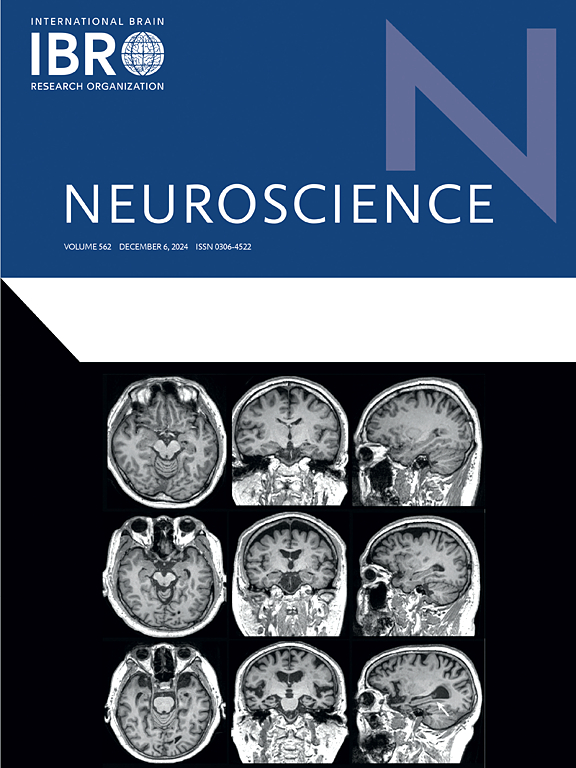在不同姿势要求下,快速步的开始是由皮质动力学引起的
IF 2.9
3区 医学
Q2 NEUROSCIENCES
引用次数: 0
摘要
我们在视觉引导下灵活启动快速迈步动作的能力可以通过快速视觉运动反应(EVRs)的形式来测量,EVRs是一种短时延(∼100毫秒)、目标定向的下肢肌肉活动爆发。我们研究了 21 名年轻健康人在不同姿势要求下迈步时,在向突出视觉目标快速迈步之前和期间的相关皮层动态。我们记录了高密度脑电图、臀中肌表面肌电图和地面反应力。独立成分分析和时频统计显示,不同条件下大脑皮层的准备动态差异显著,但相对较小,最明显的是在初级运动区。目标呈现后,我们观察到辅助运动区的θ和α功率增强更强,而初级运动区、顶叶和枕叶集群的α和β功率下降更强。运动皮层的侧特异性变化滞后于 EVR 的表达时间,这支持了 EVR 的所谓皮层下起源。总之,我们的研究结果表明,与更多反射性、刺激驱动的步法相比,在高姿势要求下,大脑皮层更多参与步法的启动。这些发现可能与因年龄或疾病而导致姿势控制受损的人群特别相关,因为在迈步过程中可能需要分配更多的皮层资源。本文章由计算机程序翻译,如有差异,请以英文原文为准。
Cortical dynamics underlying initiation of rapid steps with contrasting postural demands
Our ability to flexibly initiate rapid visually-guided stepping movements can be measured in the form of express visuomotor responses (EVRs), which are short-latency (∼100 ms), goal-directed bursts of lower-limb muscle activity. Interestingly, we previously demonstrated that recruitment of anticipatory postural adjustments (APAs) interacted with the subcortically-generated EVRs in the lower limb, suggesting context-dependent top-down modulation.
We investigated the associated cortical dynamics prior to and during rapid step initiation towards a salient visual target in twenty-one young, healthy individuals while stepping under varying postural demands. We recorded high-density EEG, surface electromyography from gluteus medius and ground-reaction forces.
Independent component analysis and time–frequency statistics revealed significant, yet relatively modest differences between conditions in preparatory cortical dynamics, most evidently in primary motor areas. Following target presentation, we observed stronger theta and alpha power enhancement in the supplementary motor area, and stronger alpha and beta power decrease in primary motor, parietal and occipital clusters during APA recruitment that preceded steps under high postural demands. Side-specific changes in motor cortex lagged the timing of EVR expression, supporting the EVR’s purportedly subcortical origin. Together, our findings point towards greater cortical involvement in step initiation under high postural demands as compared to more reflexive, stimulus-driven steps. These findings may be particularly relevant for populations where postural control is impaired by age or disease, as more cortical resources may need to be allocated during stepping.
求助全文
通过发布文献求助,成功后即可免费获取论文全文。
去求助
来源期刊

Neuroscience
医学-神经科学
CiteScore
6.20
自引率
0.00%
发文量
394
审稿时长
52 days
期刊介绍:
Neuroscience publishes papers describing the results of original research on any aspect of the scientific study of the nervous system. Any paper, however short, will be considered for publication provided that it reports significant, new and carefully confirmed findings with full experimental details.
 求助内容:
求助内容: 应助结果提醒方式:
应助结果提醒方式:


